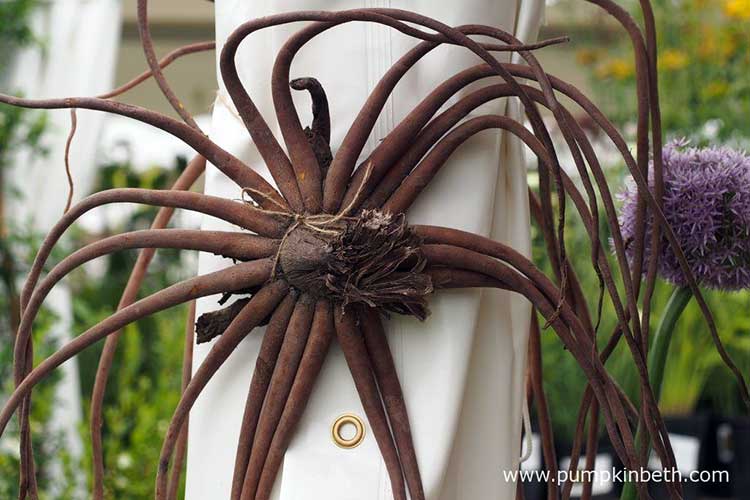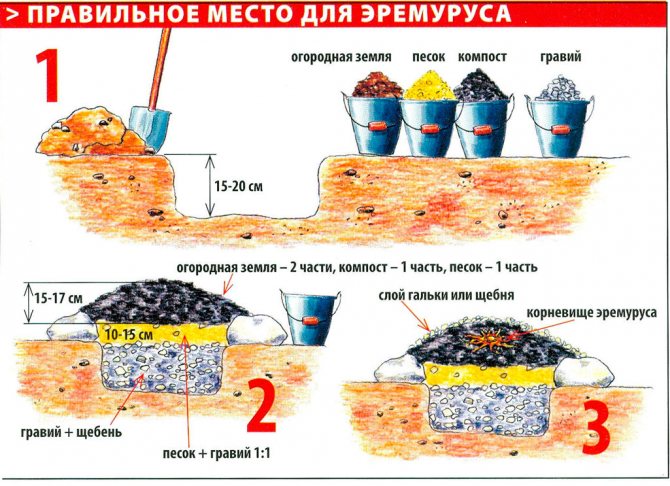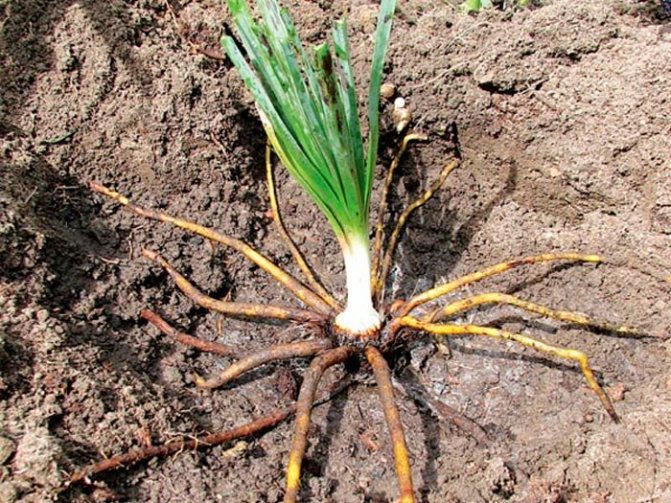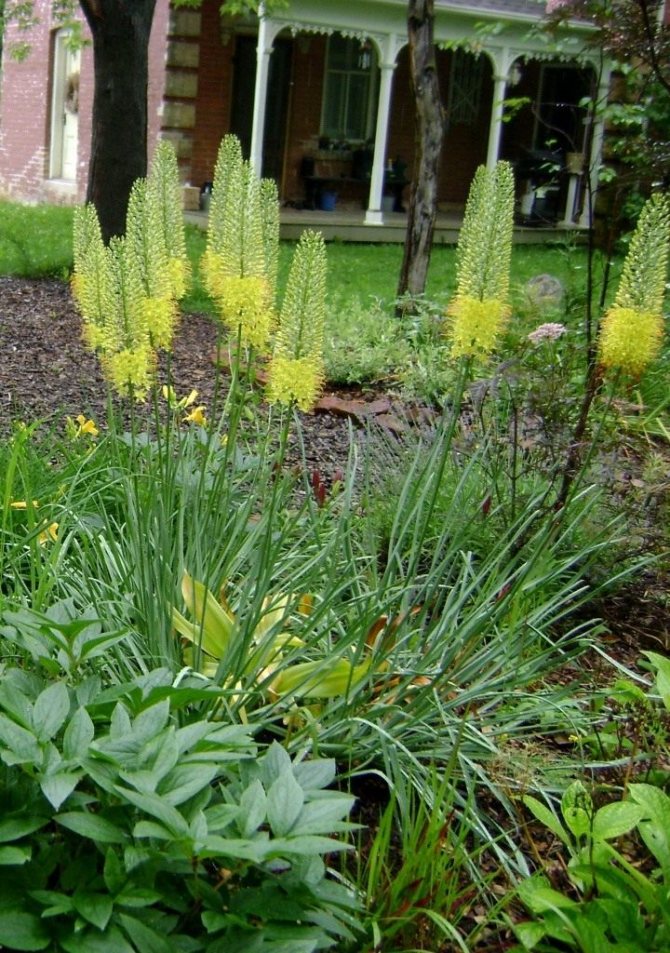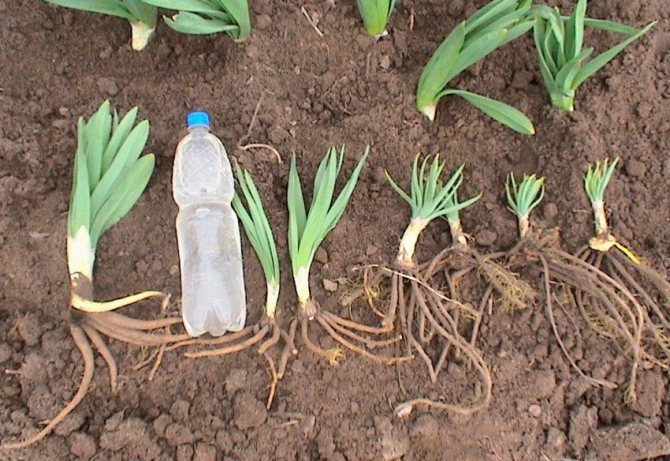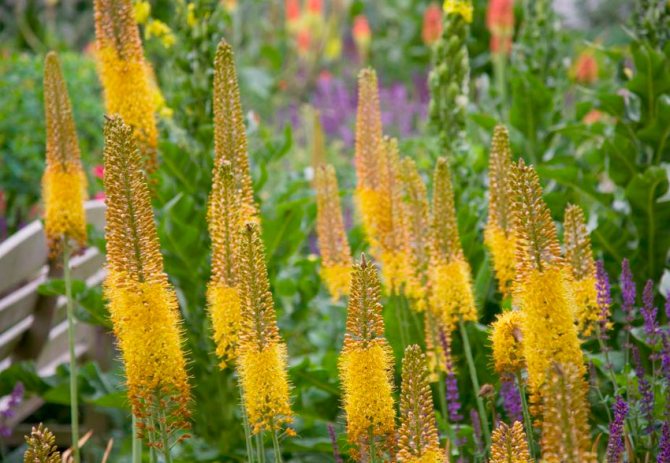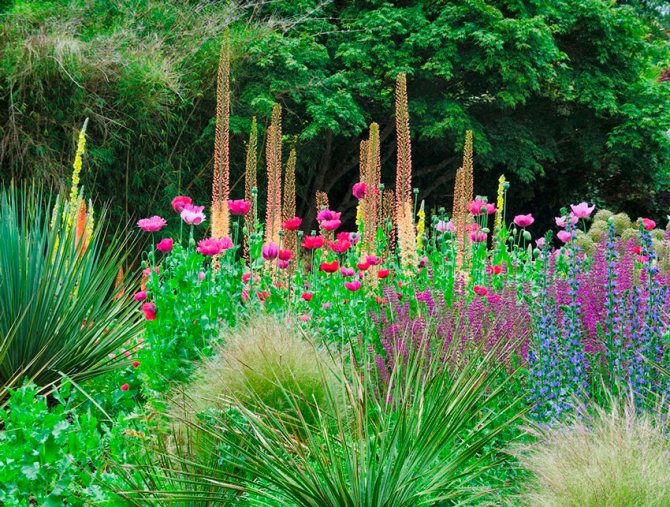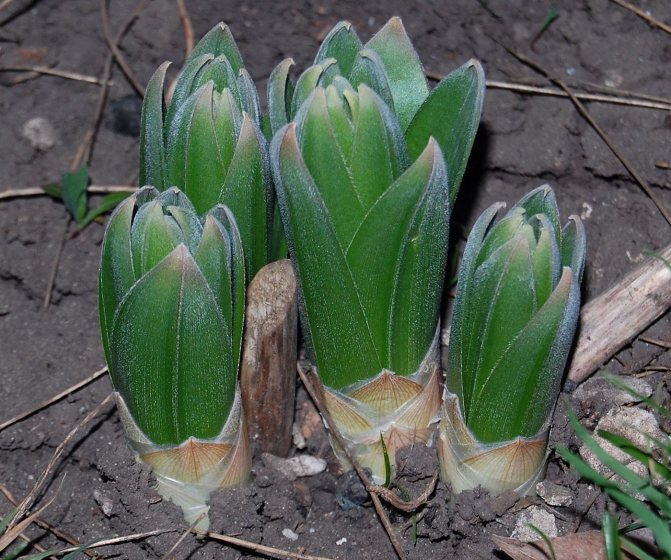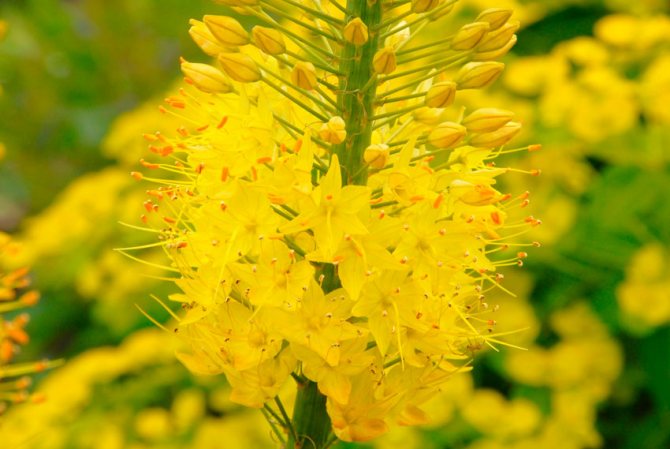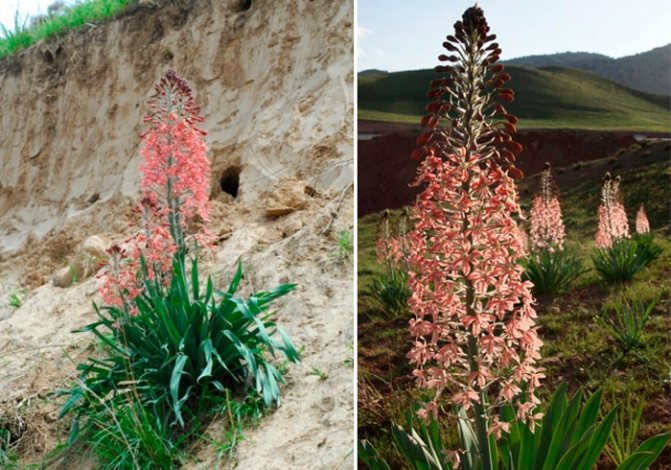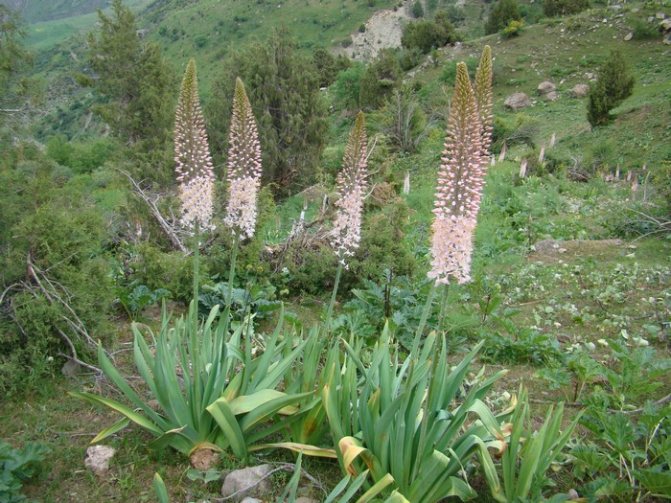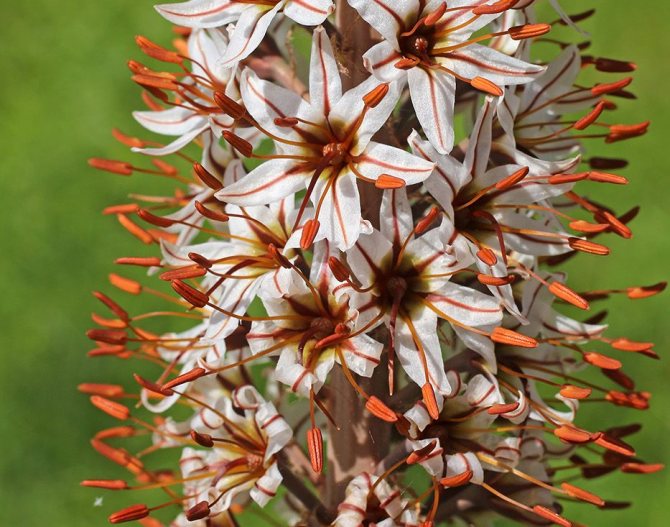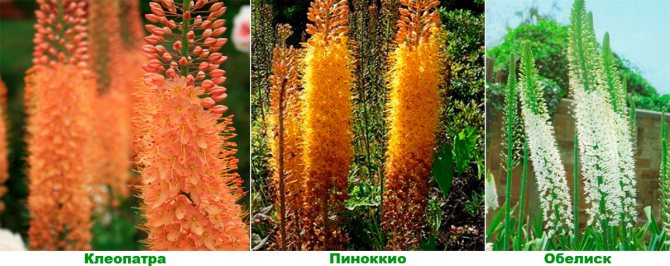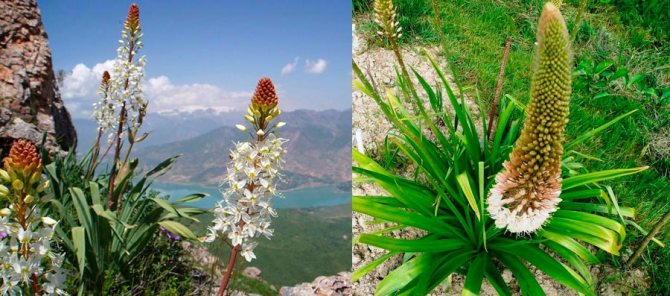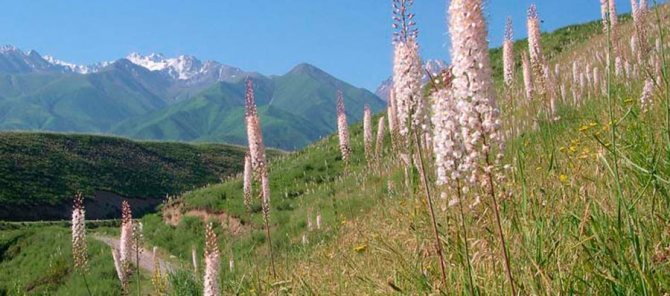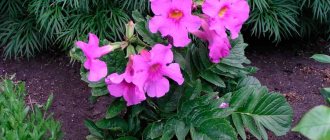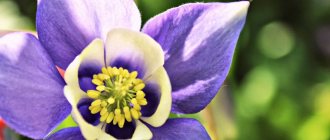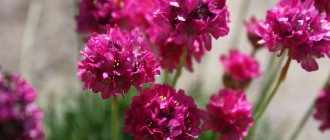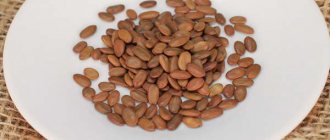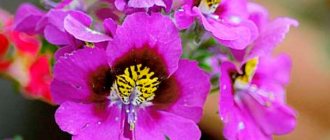Eremurus (Eremurus) is a perennial herb of the Xanthorrhoeaceae family. The name is formed by two Greek words, in translation meaning the desert and the tail - thanks to the long fluffy peduncles. The peoples of Central Asia call it shrysh, shryash - this is the name of the technical glue extracted from the roots of the plant. A plaster is also made from it. Boiled roots, leaves of some plant species are eaten. All parts of Erimus are used as a dye for natural fabrics.
Eremurus was first described in 1773 by Peter Pallas, a Russian geographer, traveler, and naturalist. In the botanical gardens of Western Europe, Russia, the plant has been grown since the 60s of the XIX century.
Botanical description
The rhizome of the plant resembles a starfish: fleshy roots sticking out in different directions are attached to a disc-shaped Cornedonian with a diameter of 10-15 cm. Plant height is 1-1.5 m, maximum - 2.5 m. The root rosette consists of numerous leaves about 1 m long.
The leaf plates are triangular, flat, oblong, narrow or wide, colored dark green. The stem is single, leafless, ends in a large racemose inflorescence about 1 m high. Bell-shaped flowers are arranged in a spiral, they are painted in white, yellow, pink, dusty red or brown.
Bloom
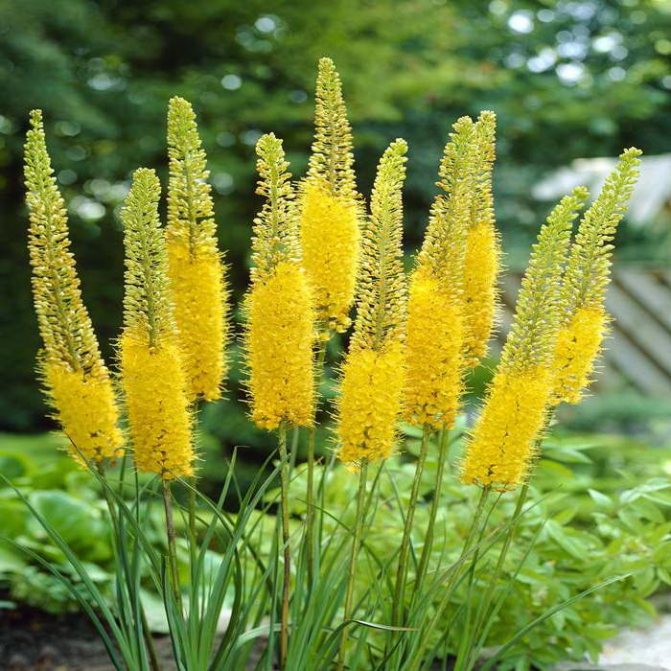
Eremurus perennial planting and care in the photo eremurus eremurus bungei yellow
Flowering begins from the bottom, each corolla is open for about a day. Flowering starts in mid-spring and lasts about 40 days. Fragrant flowers attract pollinating insects. After flowering, spherical triangular seed pods appear. Inside, they are delimited into 3 compartments, each of which contains small winged seeds.
The natural habitat is the steppes and desert regions of Eurasia.
Growing eremurus from seeds
Eremurus seeds photo
Planting seeds in the ground
- Sowing seeds in open ground is carried out in early spring or before winter.
- Dig up the soil, level the area, make grooves 1.5 cm deep, distribute the seeds and sprinkle with earth.
- Thin the seedlings, leaving a distance of 30-60 cm between the plants.
- Water in moderation, loosen the soil.
- Flowering will occur in the 4-5th year of growth.
Eremurus from seeds at home


Eremurus from seeds for seedlings photo shoots
It is best to grow seedlings. Sow eremurus seeds for seedlings in September-October.
- The seedling container needs a wide one, at least 12 cm deep.
- Fill it with a peat-sand mixture.
- Spread the seeds over the surface less often, sprinkle with a layer of soil 1-1.5 cm thick. Germinate at an air temperature of 15 ºC.
- Seedlings will appear by spring, but they will not be uniform - the seeds can germinate for about 2 years.
- When the weather is warm, move the container with crops to the open air.
- Water often and abundantly, but without stagnant water, drain the excess in the pan.
- With the appearance of two true leaves, plant in separate containers.
- When the ground part is dry for a dormant period, move the erimurus to a dark room.
- Move to fresh air again in autumn.
- Before frost starts, cover the seedlings with dry leaves, compost or spruce branches (about 20 cm thick). Remove the shelter in the spring. Grow in this way for about 3 years.
Testimonials
Eremurus is a gorgeous field plant that bewitches with its beauty. There are many articles and reviews on the Internet regarding the cultivation of this plant. Most of the reviews are positive. Most people emphasize the beauty of the plant and its rapid growth as advantages.
However, there are negative reviews in which people write about the difficulties of growing and caring for a plant. Some talk about their experience with planting a plant, which was not entirely successful and the plants died.
In general, before planting any plant on your site, you need to study all the necessary information about the features of planting and caring for the crop. Otherwise, a lot of effort, time and money will be spent.
Planting eremurus seedlings in open ground
When and where to plant
Planting erimus in open ground is carried out in September. Find an open, sunny area. Strong stems are not afraid of even strong winds.
Priming
The plant is not whimsical to the composition of the soil. It should be well-drained, neutral or slightly alkaline. It is noted that flowering occurs later on fertile soils.
How to plant
Dig a wide hole about 25-30 cm deep, add a layer of coarse sand 5 cm thick, transfer the spider-like rhizome together with an earthen lump, then add soil (turf, humus, compost). The rhizome should be underground at a depth of 5-7 cm. Keep a distance of 25-30 cm between low-growing species, 40-50 cm between tall ones, 70 cm between rows. Water well after planting.
Landing
Most often, Eremurus for planting is purchased in the form of a slightly dried Cornedonian. During the purchase, you should definitely check for the presence of a kidney, there are times when there are several of them on the upper surface of the bottom.
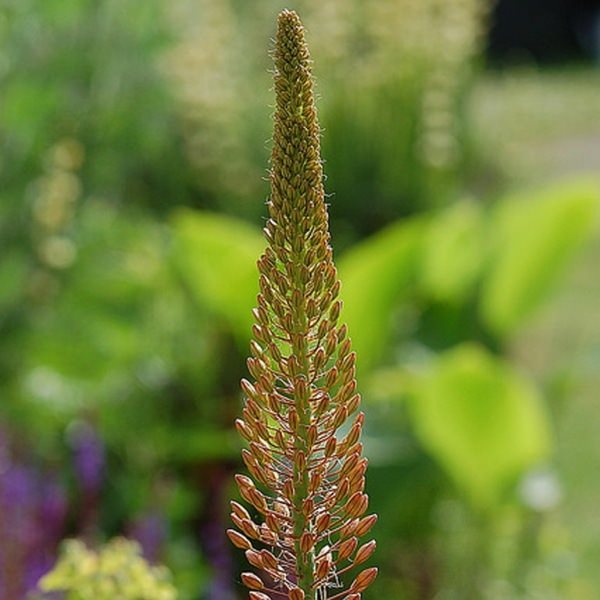

The scales that fold the bud should be fresh and tightly packed. Make sure that the roots are not broken off. The bottom with broken, bad roots may die.
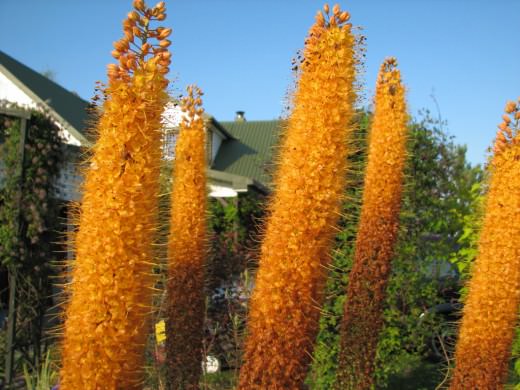

Prepare tall and well-drained beds. It would be best to pour pebbles or fine gravel into the base of the ridge as drainage. Excess water will run well along them. The depth of the soil layer should be about 40 cm, the soil is neutral or slightly alkaline. Ideally, if the mixture is prepared on its own - fresh sod land with the addition of 1/3 of the greenhouse soil with compost or humus.
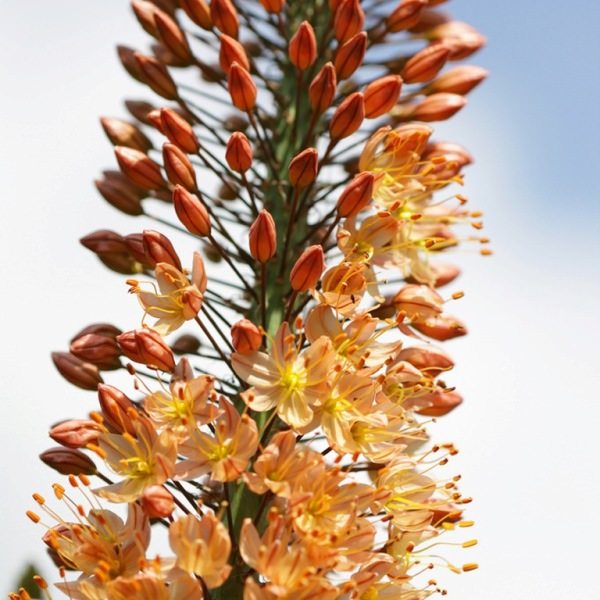

Fine pebbles or coarse sand should also be added to this mixture. But, at the same time, a huge number of varieties grow calmly on clay soils, which should only be slightly loosened with the addition of crushed stone, compost and sand.


The best time to plant is September. Especially under the cornedon, a hole is dug up to a depth of 20 cm, where it is placed, carefully spreading all the roots. The hole should be large enough so that the roots are evenly distributed to the sides. Do not forget that dried roots are rather fragile and you need to be very careful with them. Eremurus is planted at a distance of 30-40 cm in one row and at a distance of 60-70 cm between rows.


How to propagate Eremurus by children
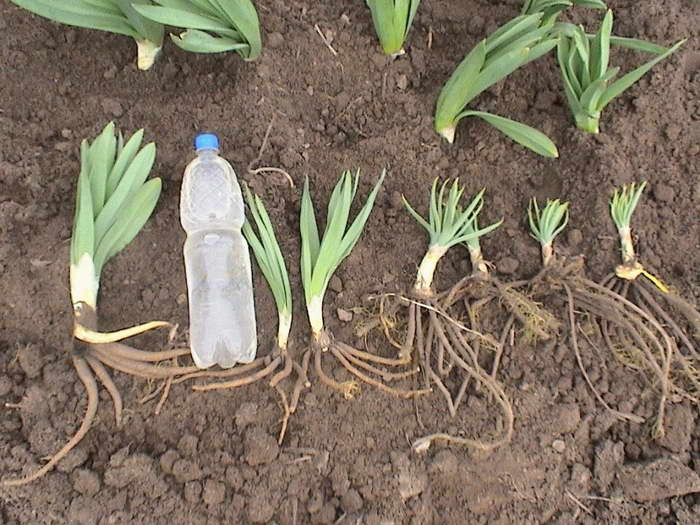

How to propagate an eremurus photo
In the spring, several small ones can be found near the main leaf outlet. Separate them from the mother plant, treat the cut with a fungicide and transplant.
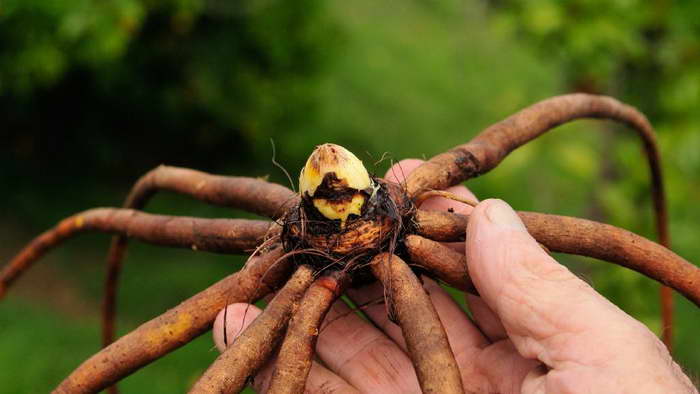

Eremurus can be cut and obtained several plants in the next season
You can speed up the process of education "kids". To do this, before planting, the cornedone should be cut into several parts so that each part contains several roots. Treat the cuts with a fungicide, plant in open ground. By the next fall, each part will have a scion.
Description
Eremurus has spherical roots, from which powerful shoots extend deep into the ground.The flower reaches from a meter to one and a half meters in height, but in history there have been species that reach 2.5 meters.
Near the ground, Eremurus has a rosette of leaves, the leaves of a dark green color grow up to one hundred centimeters in length. They are smooth and dense to the touch, and in shape they resemble a semicircle with a sharpness towards the end.
By April, a bare stem begins to peep out of the outlet, and inflorescences up to one meter long appear at the top.
How to care for eremurus in the garden
The plant is unpretentious in care.
Watering
Water abundantly from spring to mid-summer (assuming no rainfall). After the end of flowering, watering is not necessary.
Loosen the soil regularly after watering or rain, but do not dig deeper to avoid damaging the roots.
Eremurus after the withering away of the ground part
There is one peculiarity: when the leaves of the eremus are dry, it is advisable to dig up the rhizome and store in a ventilated room for about 3 weeks - so the plant will not suffer from heavy rainfall. Handle the roots gently. In order not to dig up the rhizome, you can build a shelter from the rain over the site.
Top dressing
In early spring, apply top dressing: 40-60 g of complex mineral fertilizer or 5-7 kg of rotted manure per 1 m². Before winter, add 30-40 g of superphosphate for each m². If the soil is depleted, apply 20 g of ammonium nitrate per unit area before flowering.
Plant care
Being a perennial from a close climatic zone, Eremurus easily adapts to the conditions of harsh winters (most varieties tolerate frosts down to -20 ° C) and does not require special care. The main thing is to prevent waterlogging of the soil, especially from July to October, to remove weeds on time and to regularly carry out pest control. It is recommended to use insecticides to kill insects.
Typical plant diseases, subject to planting rules and a correctly selected area, do not threaten a shrysh. With increased dampness due to frequent rains and lack of drainage, it can be affected by rust (a clear sign - brown spots) and chlorosis (yellowing and pale color of the leaves). If you remove the damaged parts, and the flower itself is transplanted to a sunny place with loose dry soil, these problems will disappear.


Diseases and pests
Possible diseases:
Rust (in damp warm weather, the leaves are covered with brown spots, black strokes). Remove the affected areas, treat with a fungicide;
Fungal infections (the surface of the leaf plate becomes lumpy, yellow spots appear). Affected plants should be removed and burned;
Chlorosis (leaves turn pale, yellowish). Most likely the roots of the plant will die off. Dig the bush, cut off the affected areas, treat the cut with a fungicide and return the plant to the soil.
Pests:
- thrips, aphids (settle on leaves, it is necessary to carry out treatment with an insecticide);
- slugs (collect by hand, use traps);
- the roots can be eaten by field mice, moles (roots affected by pests begin to rot - the actions are the same as in case of chlorosis. Use traps against pests).
Diseases
Flowers are susceptible to pests and diseases.
| Pest | Control measures |
| Slugs | Sprinkle the soil with tobacco dust, ash, or ground chicken shells. |
| Rodents | Spread out baits, spill holes with water. |
| Aphid |
Wash the flowers with soapy water.
Insecticides (mixed with water):
- Akarin (5 ml per 5 l);
- Aktara (4 g per 5 l);
- Karbofos (6 g per 1 liter).
The plant can be susceptible to disease.
| Symptoms | Cause and disease | Remedies |
| Brown and dark spots on leaves, plant weakness. | Dampness. |
Treatment with fungicides once every 2 weeks (with water):
- Fundazol (1 g per 1 L)
- Speed (1 ml for 2-4 liters)
- Oxyhom (4 g per 2 l).
Digging up and destroying the plant.
Types and varieties of eremurus with photos and names
The genus has about 60 species. Consider the most popular types and varieties.
Eremurus aitchisonii


Eremurus aitchisonii Eremurus aitchisonii photo
Flowers open in April. Basal rosette consists of 18-27 large leaves. They are keeled, wide, rough at the edges, painted in bright green. The stem is glossy, pubescent at the base. A loose cylindrical inflorescence stretches 110 cm, the diameter is 17 cm, the inflorescence has 120-300 corollas. Bracts are white in color with a dark vein, perianth is bright pink, pedicels are brown-purple in color.
Eremurus albertii
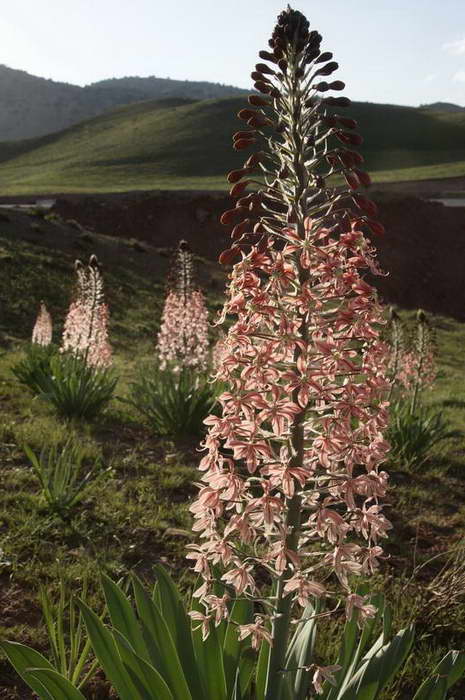

Eremurus alberta Eremurus albertii photo
Eremurus is about 1.2 m high. Straight oblong leaves are directed upwards. The lower part of the stem is covered with a bluish bloom. The length of the loose inflorescence is about 60 cm, its diameter is 12 cm. Bracts are white in color with a brown vein, the perianth has a dark red tint with a brown vein.
Eremurus the powerful Eremurus robustus


Eremurus the powerful Eremurus robustus photo
The leaves are wide, oblong, dark green in color with a bluish bloom. The green-gray stem ends in an inflorescence about 120 cm long. The perianths are white or pale pink, the bracts are brown with a dark vein.
Eremurus Olga Eremurus olgae
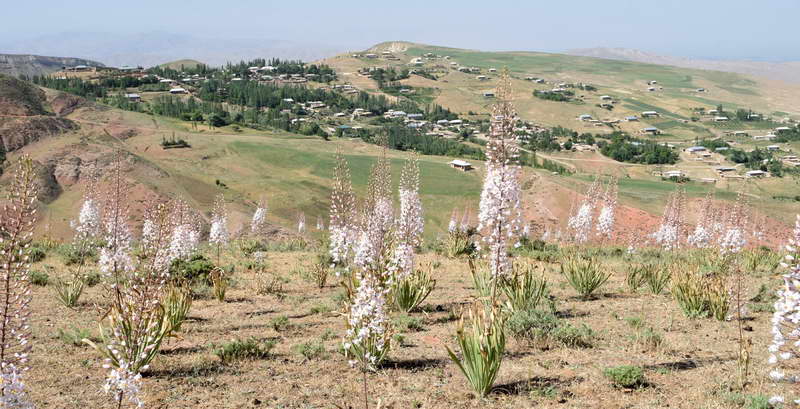

Eremurus Olga Eremurus olgae photo
The height of the plant is 1.5 m. The leaves are narrow-linear, dark green in color with a bluish bloom. The dense root rosette has about 65 leaf plates. The inflorescence in the form of a cylinder or a cone is about 60 cm long, 15 cm in diameter. The perianths are pink or pale pink in color, the vein is dark red, and at the base there is a yellow spot. Occasionally, the perianths may be white with a greenish vein. It blooms in May-August, depending on climatic conditions.
Eremurus bunge Eremurus bungei aka Eremurus narrow-leaved, or Eremurus deceiving Eremurus stenophyllus
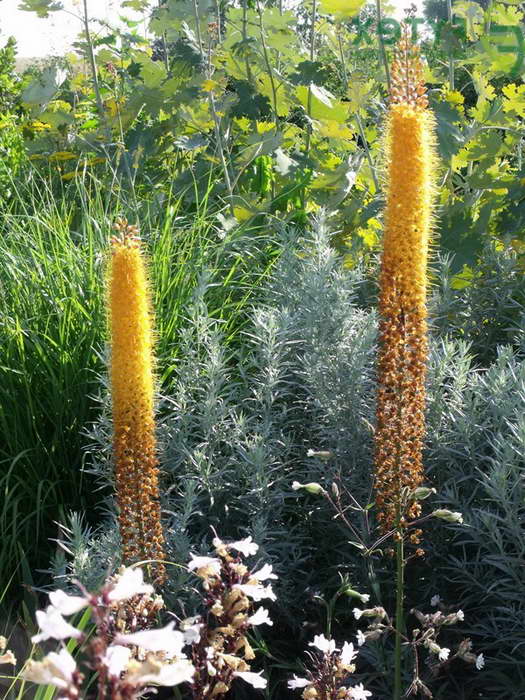

Eremurus bunge Eremurus bungei aka Eremurus narrow-leaved, or Eremurus deceiving Eremurus stenophyllus photo
The plant is 1.7 m high. The leaves are narrow-linear, green-gray in color. The base of the stem may be covered with coarse hairs. The inflorescence is cylindrical, dense, can reach a height of about 65 cm. Flowers are painted in bright golden color. The inflorescence has 400-700 corollas.
The following types of Eremurus are also popular: white-flowered, Suvorov, Tunberg, Regel, Korzhinsky, Junge, Kaufman, Ilaria, Zoya, Zinaida, Kapyu, Crimean, Tajik, Tien Shan, Kopetdag, Nuratav, Sogdian, Turkestan, Indian, Hissar, , comb, comb, beautiful, amazing, fluffy, yellow, white, pinkish, milky, crested.
Shelford hybrids
Crossing the species of Eremuros Bunge and Olga gave a color range from white to yellow-orange.
Among them it should be noted:
Isobel - pink flowers with an orange tint;
Rosalind is completely pink in color;
Moonlight - light yellow flowers;
White Beauty - snow-white flowers.
Also, on the basis of these species, a group of tall (highdown) hybrids has been bred: Gold, Golden Dwarf, Hydine Dwarf, Citronella, Don, Lady Falmouth, Sunset.
Ruiter's hybrids are very popular:
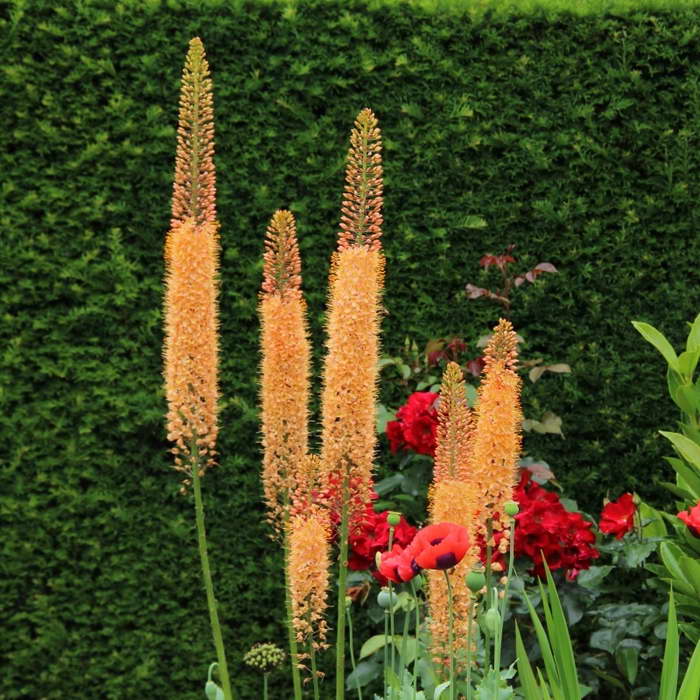

Eremurus cleopatra photo and description of the hybrid
- Cleopatra - plant height is 1.2 m. Stamens are bright orange, flowers are orange-brown;
- Pinocchio - the stem reaches a height of 1.5 m. Flowers are sulfur-yellow with cherry-colored stamens;
- Obelisk - white flowers with an emerald center;
- Roford - flowers have a salmon tint;
- Romance is a salmon pink shade of flowers;
- Emmy Ro is yellow flowers.
Features of eremurus
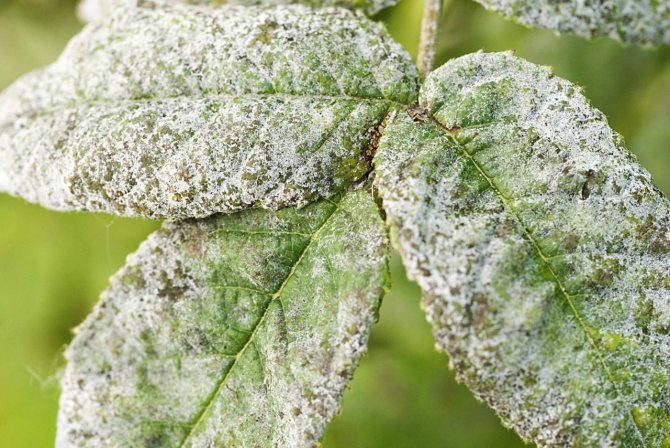

Eremurus has a root that looks like a starfish. The diameter of the Cornedonian varies from 10 to 15 centimeters, and its shape is disc-shaped, twisted fleshy roots that are cylindrically or spindle-shaped thickened from it, while they stick out in different directions.On the bush, most often there is a large number of flat trihedral-linear leaf plates, which can be narrow or wide, their lower surface is keeled. A large elongated cyst-shaped inflorescence of a meter length is located on a single leafless shoot. Bell-shaped flowers on the peduncle are arranged in a spiral, while they can be colored yellow, brown, dusty red or pink. Flowers begin to open from the bottom of the inflorescence, with each flower withering approximately 24 hours after blooming. The duration of flowering directly depends on the type and variety of the plant and can vary from 10 to 40 days. The fruit is a three-celled semi-lignified or membranous capsule of almost spherical shape, which cracks when ripe, its surface can be wrinkled or smooth. Triangular wrinkled seeds have 1 transparent wing. Such a flower is a very good honey plant.
Eremurus in landscape design
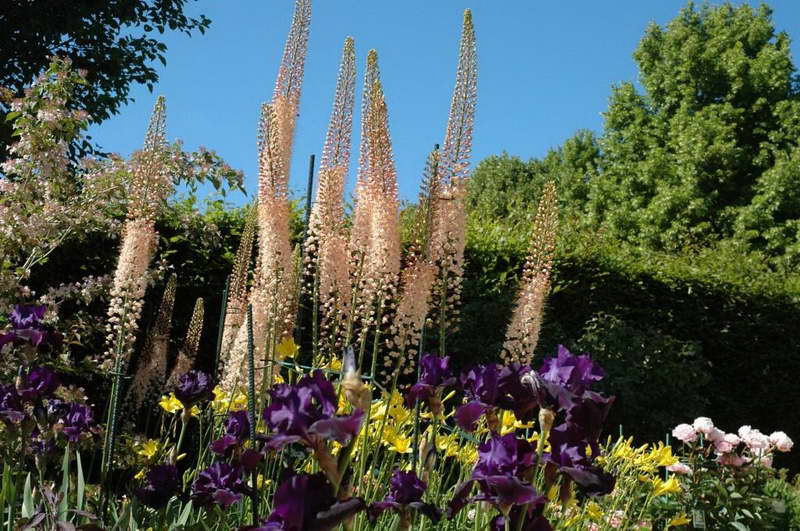

Eremurus in landscape design photo of flowers in the garden
Due to its unusual shape and size, Eremurus looks good solo.
It will be a great accent in planting in a group with low-growing plants. Daffodils, hazel grouses, late tulips will be good neighbors.
It is harmoniously combined with irises, mallow, sage, allium, cortaderia, yucca, ornamental cereals.
The most common types
Eremurus differs from other plants not only in its unique appearance, but also in a large number of varieties and subspecies. This article lists only the most popular and widespread in Russia. Among these, gardeners distinguish the following:
- Eremurus Echison


- Eremurus bunge Eremurus Olga
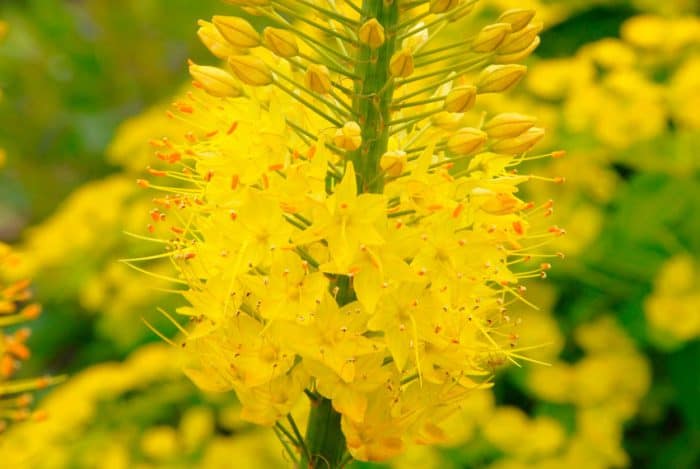

- Eremurus Albert Eremurus powerful
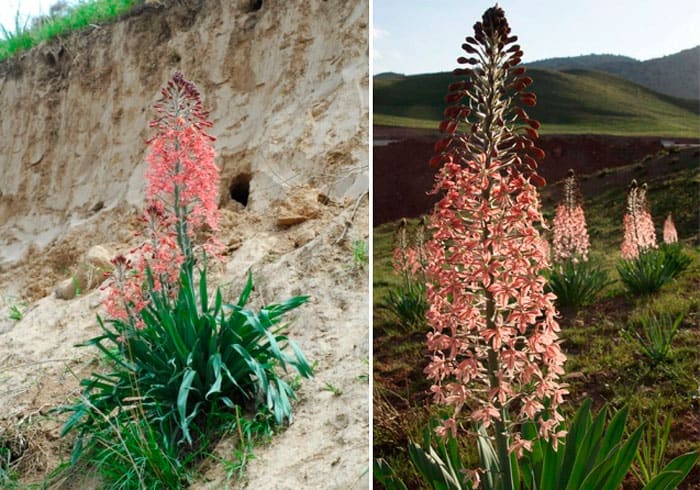

BIOLOGY AND GEOGRAPHY OF THE EREMURUS FLOWER
Eremurus - perennial herbaceous plants, numbering 60 species. Plants of the genus Eremurus grow in the wild nature of Central and Western Asia, also in the southern regions of Europe. The most common type is Eremurus wonderful, or Eremurus representative, grows in the southern regions of Russia, Ukraine, Transcaucasia and Asia. Eremurus flower is a tall plant during the flowering period. An erect peduncle emerges from the "fountain" of narrow long leaves. The height of the peduncle in different species is different, from 0.5 to 2 meters. The flowers form a raceme inflorescence. Different types of Eremurus come in different colors. Pollinated by bees, bumblebees and buzz flies. Eremurus are good honey plants.



